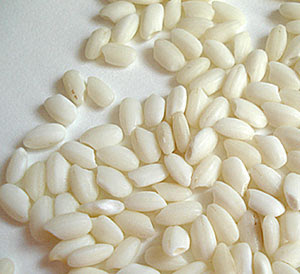After what seemed like the longest winter of my life, spring has finally sprung. The days are longer, the grass is greener, the sky is a more vibrant indigo. The cherry blossoms have come and gone, and there’s a morning dew on my car rather than an icy, teeth-chatter inducing frost.
This means that the dog days of summer aren’t far off and neither are cravings for summer’s finest eats- those that nature creates: crisp watermelon, succulent peaches, vine-ready tomatoes, and those that man manipulates: salty grilled meats, juicy roasted hot dogs, lively summer salads. And then there’s the marriage of both worlds with dishes like tangy, cool gazpacho.
Although the tomatoes aren’t yet the sun-ripped fruit of summer, I was desperately craving gazpacho enough to risk making an imperfect soup. The warm weather brings forth the soil’s rich bounty and raw vegetables take center stage. I jumped the gun a bit with this raw tomato-based soup, but couldn’t wait to fill my belly with this quintessential summer food.
With the windows wide open, I began vigorously chopping and grating veggies. With just the collective sound of the birds chirping and the knife swiftly meeting the cutting board to keep me company, I recalled the cold summer soups of my childhood, watermelon seed spitting contests, charcoal grilled corn on the cob, shrimp, shells intact, wrapped in foil and char-grilled.
For the gazpacho, I used an Alice Waters recipe. Let it be known that Alice doesn’t believe in using food processors and blenders when they can otherwise be avoided- certainly a purist in the age of modern appliances. And although this recipe for Gazpacho came from her new book “The Art of Simple Food” and although the technique itself is unassuming, it is certainly time consuming, which in my eyes, negates the concept of simplicity. The recipe employs the use of a grater and about halfway through the process of grating not-quite-ripened tomatoes, my hands were swollen and aching for a blender.

I adore Alice and everything she represents but started to wonder about the maddening nature of this recipe. Everything crushed, mashed, grated by hand. In a cookbook review in the New York Times, Kim Severson states “in parts of the book she veers past purity to madness. Halfway into a recipe for gazpacho, while soaking ancho chili, grating tomatoes and mashing it all in a mortar and pestle, you start to look at the blender with longing.”
Although I felt like a veritable masochist while making this gazpacho, I tried to zone out and appreciate what it must have been like before the Cuisinart and the KitchenAid- not an easy feat in the age of robots!
I followed the recipe almost to a T, although noticed that my ancho chile was not absorbing as much hot water as it should have. I soaked it for an extra ten minutes in a refreshed bowl of boiling water and when mashing with a mortar and pestle, I added a teaspoon or so of warm water to accelerate the breakdown of the chile fibers.

In the end, all the pain was worth the gain- a piquant, colorful soup bursting with freshness and flavor.
Alice Water’s Gazpacho.
Makes about 3 quarts; 6 to 8 servings.

Soak in a bowl of hot water for 15 minutes:
1 dried ancho chile
Drain and crush to a paste with a medium-size mortar and pestle. Remove and set aside.
In another bowl, soak in cold water for 2 minutes:
2 cups crustless cubes of day-old bread
Drain and squeeze out the excess water.
In the mortar and pestle, pound together into a paste:
2 garlic cloves
A pinch of salt.
Add the soaked bread, pound until smooth, and set aside.
Cut in half horizontally:
5 pounds ripe tomatoes
Over a bowl, grate the cut sides of the tomatoes on the medium holes of a box grater until only the skin is left. Discard the skins. Pass the pulp through a strainer to remove seeds, if you like. Stir the chile puree and the bread paste into the tomato pulp in a large bowl. Add:
1/4 cup extra-virgin olive oil
Salt
Refrigerate until well chilled. To speed this up you can set the bowl in another, larger bowl filled with ice. Taste for seasoning before serving and add more salt if needed.
Make a relish to garnish the soup. Mix together:
1/2 pound cherry tomatoes, halved
1 cucumber, peeled and diced
1 yellow bell pepper, seeded and diced
1/2 red onion, diced
A handful each of chopped chervil and basil
2 tablespoons red wine vinegar
1/4 cup extra-virgin olive oil
Salt
Fresh-ground black pepper
Divide the chilled soup among 6 to 8 bowls and add a generous spoonful of relish to each bowl.



















